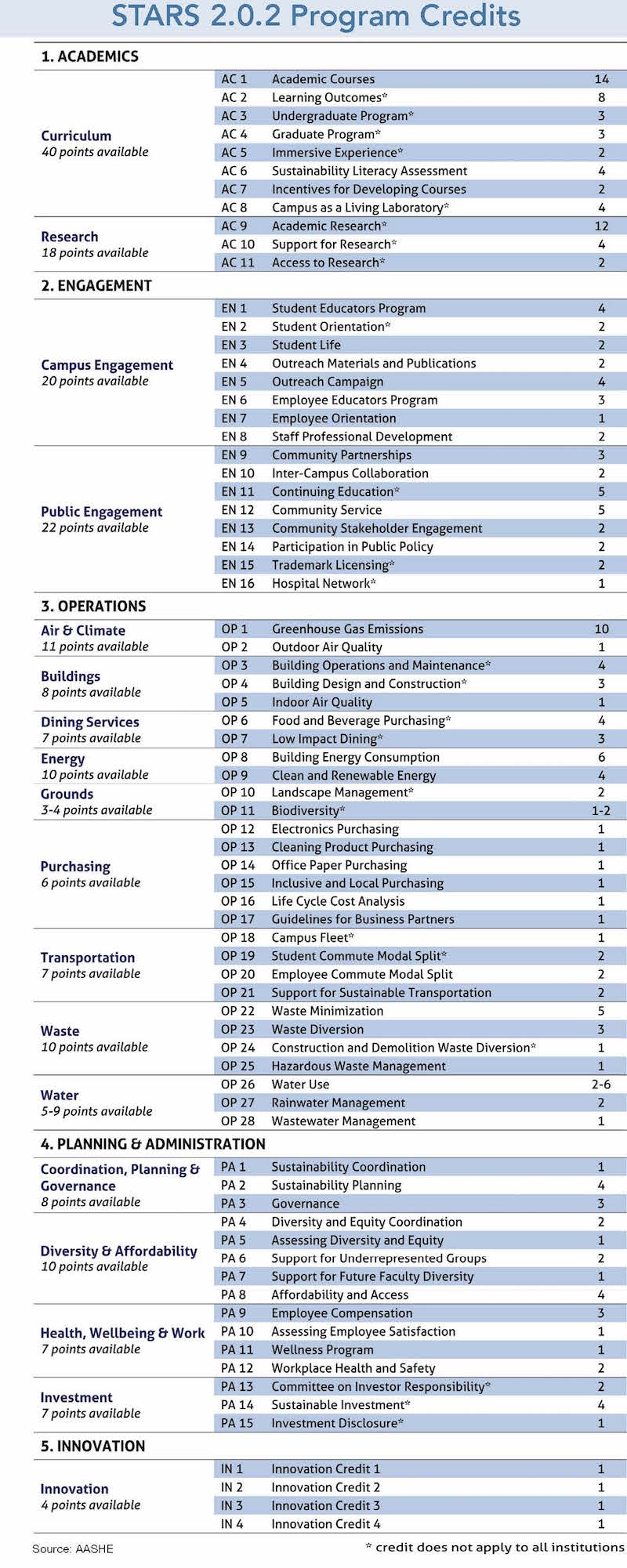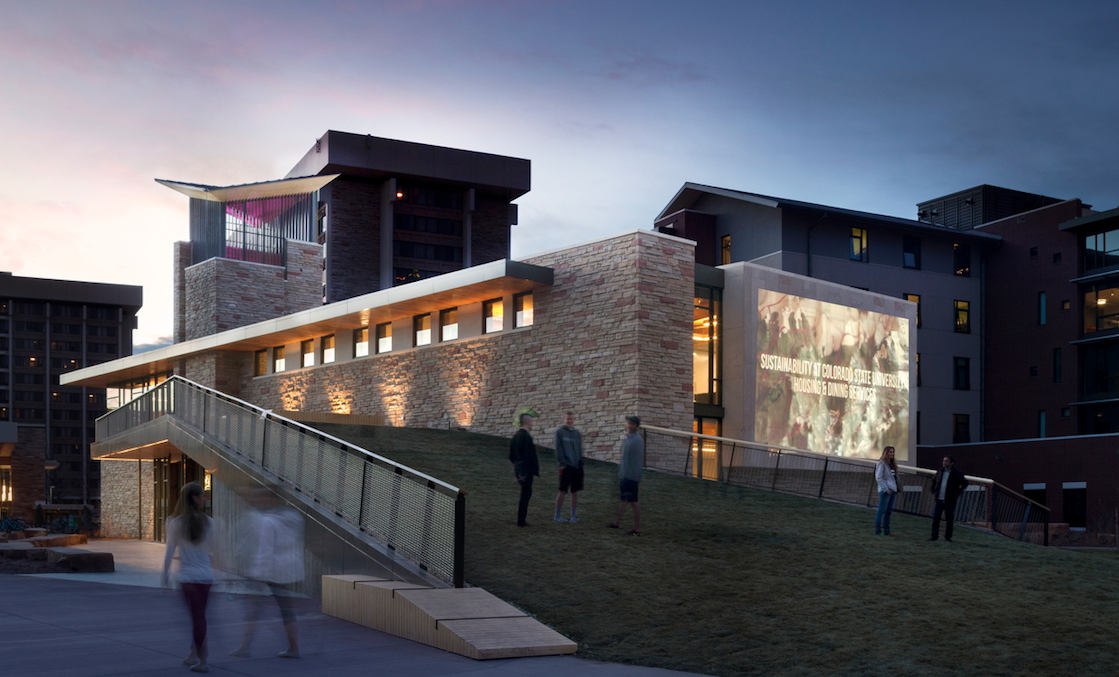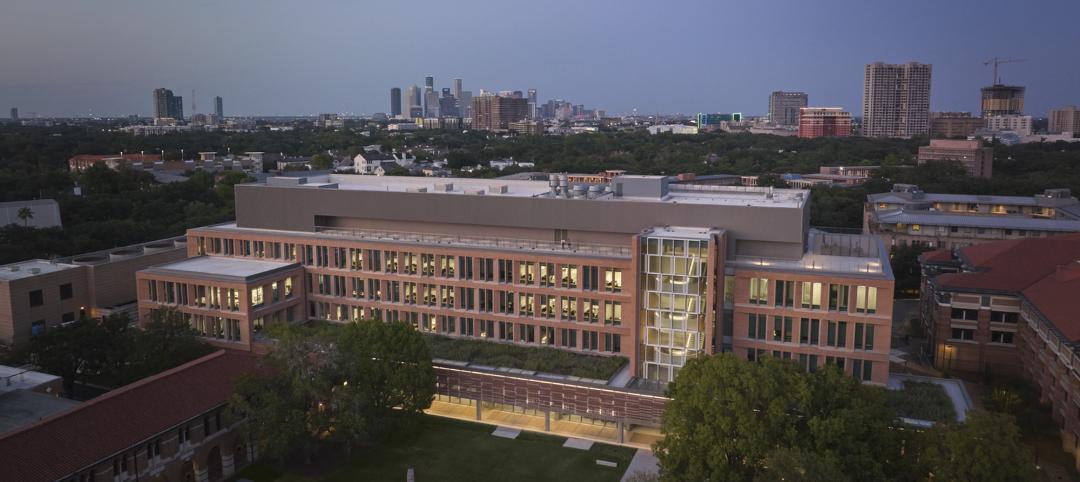In the higher education sector, sustainability and green building extend far beyond the built environment. Buzzwords like “living lab” and “experiential learning” are indicative of the trend toward more holistic sustainability programs that incorporate all facets of college life—operations, curriculum, campus/community engagement, research, buildings, even resiliency and climate change.
Since 2010, the Association for the Advancement of Sustainability in Higher Education (AASHE) has tracked and evaluated the sustainability efforts of the nation’s colleges and universities using its Sustainability Tracking, Assessment and Rating System (STARS). The voluntary, self-reporting tool, which to date has attracted 359 participating schools and awarded 248 institutions with some level of sustainability designation, evaluates campus programs based on 17 criteria in four categories, plus an innovation category (see table below). Schools can achieve one of four ratings based on the percentage of total possible credits they earn—Platinum (score of 85% or better), Gold (65%), Silver (45%), or Bronze (25%). Innovation points are tacked on to the percentage score. A STARS rating is valid for three years.
In March 2015, Colorado State University (CSU) became the nation’s first institution to earn STARS Platinum, posting a score of 85.29. To date, 80 schools have earned Gold, 122 have achieved Silver, and 45 Bronze.
In AASHE’s latest round of STARS certifications, completed earlier this year, CSU led all submitting schools in three categories—Public Engagement, Waste, and Wellbeing & Work—and was the only institution to achieve the highest score in more than two of the 17 sections. The top scorers in the other categories were:
• Arizona State University (Purchasing)
• Colby College (Air & Climate)
• Columbia University (Transportation)
• Green Mountain College (Curriculum)
• Pennsylvania State University (Water)
• Stanford University (Diversity & Affordability)
• Sterling College (Dining & Food)
• Unity College (Energy, Investment)
• University of Illinois, Urbana-Champaign (Buildings)
Here’s an overview of the sustainability programs and innovations at these schools and others tracked by AASHE (source: AASHE’s 2015 Sustainable Campus Index, http://tinyurl.com/AASHE2015index):
CSU has partnered with the city of Fort Collins on two public engagement programs: FortZED, an initiative to transform downtown Fort Collins and the CSU campus into a net-zero energy district, and Climate Wise, aimed at reducing greenhouse gas emissions.
With the goal of becoming carbon neutral by the end of 2015, Colby College launched a number of campus programs to slash carbon emissions, including a move to 100% renewable electricity, energy-saving retrofits, use of sustainably harvested wood biomass, and purchasing carbon offsets.
More than three-quarters (76%) of Sterling College’s food is sourced from local, sustainable, fair trade, or humane sources; one-fifth is grown on campus. The school has no vending machines, convenience stores, or franchises.
The University of California Santa Barbara’s Residential Dining Services partnered with local farmers to create the Harvest Santa Barbara distribution network. In 2012-13, the school purchased 41% of its produce from 53 local farms within 150 miles of campus.
Florida Gulf Coast University uses a massive thermal ice storage system to cool campus buildings during peak hours. The 146-tank system produces 23,360 tons of cooling capacity, saving the school $400,000 annually in utility costs. FGCU also features a 15-acre solar photovoltaic array that produces 82% of the energy needed to operate the Engineering and Business School buildings and the College of Arts and Sciences building.
Furman University reduced its energy consumption through vacancy sensors, passive solar heating, and replacing aging heat pumps with geothermal heat pumps. The school created an energy dashboard that offers real-time data.
The University of Missouri is spearheading the Clean Energy Research Consortium, a collaboration of more than 40 academic institutions and private sector companies to turn the Missouri and Mississippi rivers into a biomass corridor. One of its goals is to build a prototype bio-processing facility that would generate about two-thirds of the total biofuel called for in federal goals by 2022.
Emory University’s water reclamation facility processes the campus’s wastewater for reuse in its steam plant, chiller plants, and for toilet flushing.
In response to the ongoing drought, the Water Working Group at the University of California Santa Cruz convened in 2014 to develop water efficiency projects. To date, more than $100,000 has been awarded for projects like increased metering, water re-use systems in labs, and recycling seawater for marine mammal washings.
The University of Colorado Boulder has implemented a health-based turf management system using organic fertilizers, hand removal of weeds, and bioassay of soil borings.
A student-led reuse program at the University of Massachusetts Amherst, the New2U Reuse Collection and Tag Sale, has collected 11 tons of materials and raised $14,000 in two years.
Western University (Ontario) created The Amazing Race Western, a sustainability-themed scavenger hunt designed to raise awareness of campus sustainability measures among first-year students. The competition incorporates waste sorting, trivia, and a scavenger hunt through the university’s LEED-rated buildings.

Related Stories
Student Housing | Apr 17, 2024
Student housing partnership gives residents free mental health support
Text-based mental health support app Counslr has partnered with Aptitude Development to provide free mental health support to residents of student housing locations.
Student Housing | Apr 12, 2024
Construction begins on Auburn University’s new first-year residence hall
The new first-year residence hall along Auburn University's Haley Concourse.
University Buildings | Apr 10, 2024
Columbia University to begin construction on New York City’s first all-electric academic research building
Columbia University will soon begin construction on New York City’s first all-electric academic research building. Designed by Kohn Pedersen Fox (KPF), the 80,700-sf building for the university’s Vagelos College of Physicians and Surgeons will provide eight floors of biomedical research and lab facilities as well as symposium and community engagement spaces.
Architects | Apr 2, 2024
AE Works announces strategic acquisition of WTW Architects
AE Works, an award-winning building design and consulting firm is excited to announce that WTW Architects, a national leader in higher education design, has joined the firm.
Student Housing | Mar 27, 2024
March student housing preleasing in line with last year
Preleasing is still increasing at a historically fast pace, surpassing 61% in February 2024 and marking a 4.5% increase year-over-year.
Lighting | Mar 4, 2024
Illuminating your path to energy efficiency
Design Collaborative's Kelsey Rowe, PE, CLD, shares some tools, resources, and next steps to guide you through the process of lighting design.
Student Housing | Feb 21, 2024
Student housing preleasing continues to grow at record pace
Student housing preleasing continues to be robust even as rent growth has decelerated, according to the latest Yardi Matrix National Student Housing Report.
University Buildings | Feb 21, 2024
University design to help meet the demand for health professionals
Virginia Commonwealth University is a Page client, and the Dean of the College of Health Professions took time to talk about a pressing healthcare industry need that schools—and architects—can help address.
Higher Education | Feb 9, 2024
Disability and architecture: ADA and universal design at college campuses
To help people with disabilities feel part of the campus community, higher education institutions and architects must strive to create settings that not only adhere to but also exceed ADA guidelines.
University Buildings | Jan 18, 2024
Houston’s Rice University opens the largest research facility on its core campus
Designed by Skidmore, Owings & Merrill (SOM), the 251,400-sf building provides students and researchers with state-of-the-art laboratories, classrooms, offices, and a cafe, in addition to multiple gathering spaces.

















